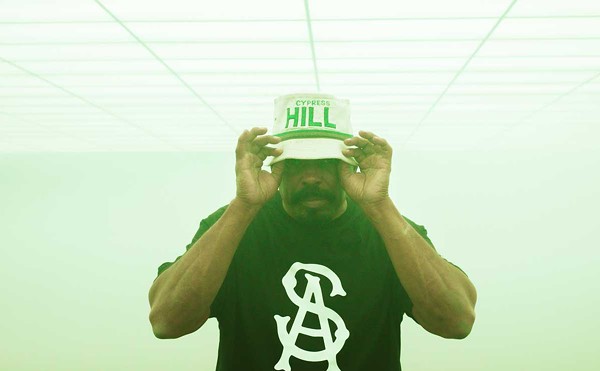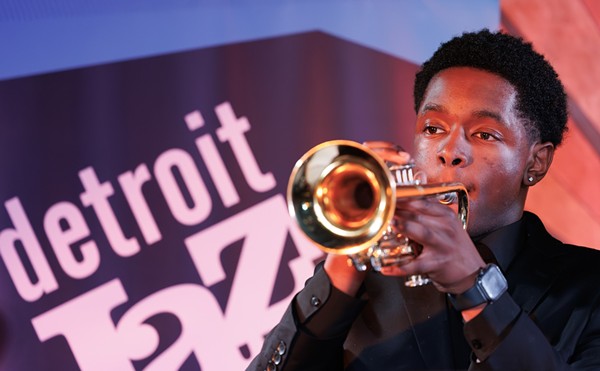I grew up with Motown humming out of the car stereo in my mom's Charger. It echoed from faint speakers in the local coin laundry as we folded towels together. Sometimes, I'd dance in place by the dryers, soaking in the music's associations with summertime barbecues and family outings where the Temptations so often played in the background. Motown was many a metro Detroit child's inheritance, or, for that matter, the inheritance of many an American child in general.
But if it the music stirred memories and associations, it had other effects as well. The clapping, stomping, tambourine-shaking and heart-aching (without stop) could be as numbing as a spinning washer buzzing inside its metal shell.
I was a Detroit kid — my mom was an auto parts deliverer; my Grandma, a body shop secretary; my uncle, a Ford plant assembly line worker — but even so, Motown was, to me, markedly, perhaps dreamily, strange.
All of that makes Motown Historical Museum on Grand Boulevard truly a musical pilgrimage site for me. Just east of it, beyond a parking lot, is the James H. Cole Home for Funerals, while to the west are a few inconspicuous brick homes. The bright white building sticks out in the middle. Hitsville U.S.A. — the words are still in the original blue cursive, just above the front porch — is the location of the legendary Studio A, where all those great Motown tracks were recorded. It's since been combined with the house next door, the first purchase of Motown founder Berry Gordy in what would soon be his legendary "Empire on West Grand Boulevard" — comprising eight buildings that would house his label's operations. Gordy (as I would later learn on my tour) took an $800 family loan to buy the place; in 1988, he would cash that investment in for $61 million, selling Motown Records to MCA, Inc.
You generally think of a museum as a place where canonical cultural artifacts are assembled and put to bed, where later generations — the irrationally proud parents — point and poke their noses against the glass. But at the Motown Museum, the past and the canonical have been dealt with differently. By the early 1970s, Esther Gordy Edwards, Berry Gordy's sister and a V.P. in a corporate affairs role, was noticing large numbers of people bombarding her for a visit to the Hitsville building. The story goes that she called up Gordy to say with surprise, "Berry, I think we just made history." With Motown by then uprooted and resettled in Los Angeles, the Hitsville house could now be converted into a museum, slowly turning into a "living family scrapbook" (since Mrs. Gordy Edwards had urged artists to retain photos, posters, and any artifacts of their Motown experiences from the very beginning).
And people are stillcoming to visit from all over. On a recent Thursday. At four in the afternoon. People from Louisana and New Hampshire. People from the metro suburbs. And they come steadily — the group I toured with numbered about 20 and, as I left, another sizable tour group was already assembling. Chief Operating Officer Audley Smith notes that the UK delivers a particularly significant number of visitors. And, oddly enough, for a museum that houses itself "Where Greatness Was," my tour group didn't seem to come with star-struck half-consciousness either. Our guide paused at an encased Michael Jackson fedora and gloves, but folks dispersed with only a couple glances, drawn more to the gallery walls covered in photos of the smiling young Motown artists being greeted by geishas, Ed Sullivan or — as told by our guide, illustrated through a display with a Motown Revue schedule — bullets from people who mistook their bus for one of the Freedom Ride vehicles. The group members read the few sidebar comments about Motown Sound. When at one point tall men blocked my view, one of them took note: "Oh, you can go ahead; I've been here before," said the man from St. Louis.
If the museum demonstrates what an enormous impact Motown had on American popular music, it speaks only implicitly of its place in broader historical context. Given Motown's critical role in the civil rights movement — allowing distanced groups of people to reach each other in a basic but powerful way — this is an interesting disjunction. This is clearest at the end of the gallery tour, where a hallway leads to Berry Gordy's preserved top-floor apartment. On one side, the wall is packed with rows of Motown album covers; on the other is a timeline superimposed over life-sized images of the label's artists. The time line is a bullet-point affair, pencil-flipping on a checklist of important dates in U.S. history as well as Motown's own (where we went to war; who went gold, etc.). But certain items do stick out: The 1960s lists include such things as "Nigeria, Cameroon, and Congo gain independence," as well as the 1967 Detroit riots. The events suggestthings, in the same way that those album covers suggest: The first four to be released on the label had drawings on the cover, absent the artists' photos — images of black men and women, it was then feared, could spur listeners more quickly to judgment than appreciation. And glossy black-and-white photos of performers onstage — minimally captioned — juxtapose with a Motown Revue lineup, including several tour sites where hotels denied the black artists a room.
But that music — it's still something special. The sound of hands clapping underneath an ingeniously improvised echo chamber (a hole cut in the ceiling that's still on display). Or the Temptations singing "My Girl" in Studio A (a small basement room with ceiling tiles for wall covers, with no windows ... and, when it was being used for recording, without fans on sweltering days). That music still makes for a surprising realization about the importance of Motown: We allknow these songs. They're ingrained the same way lullabies are ingrained: "Talkin' 'bout my girl" comes as easily as "The dish ran away with the spoon." My tour group became as excited as little kids, singing and dancing along. "Fifty years from now," Smith later remarked, "people will still be playing Marvin Gaye at weddings."
And that's hardly hyperbole. Motown's 50th anniversary will be coming up in 2009, and it certainly won't pass without a party. Gordy, the Motown museum, and Universal Music (Motown's current owner) are all planning events to celebrate the occasion; Stevie Wonder even mentioned it the other day during a telephone press conference. Universal is already on the case, in fact, collaborating with Time-Life to assemble 150 classic Motown tunes as a single commemorative box set.
The Motown Historical Museum is at 2648 W. Grand Blvd., Detroit; 313-875-2264.





